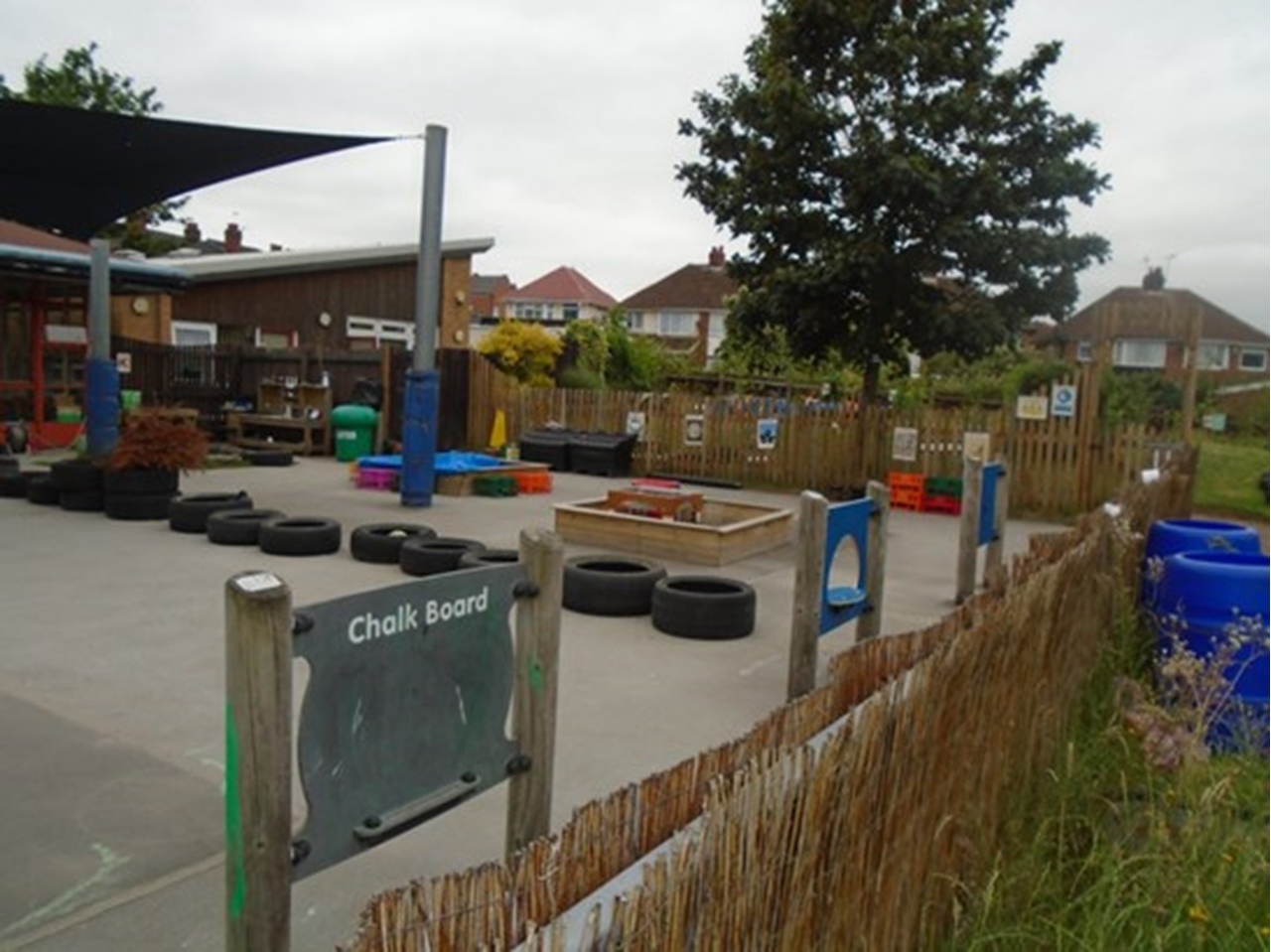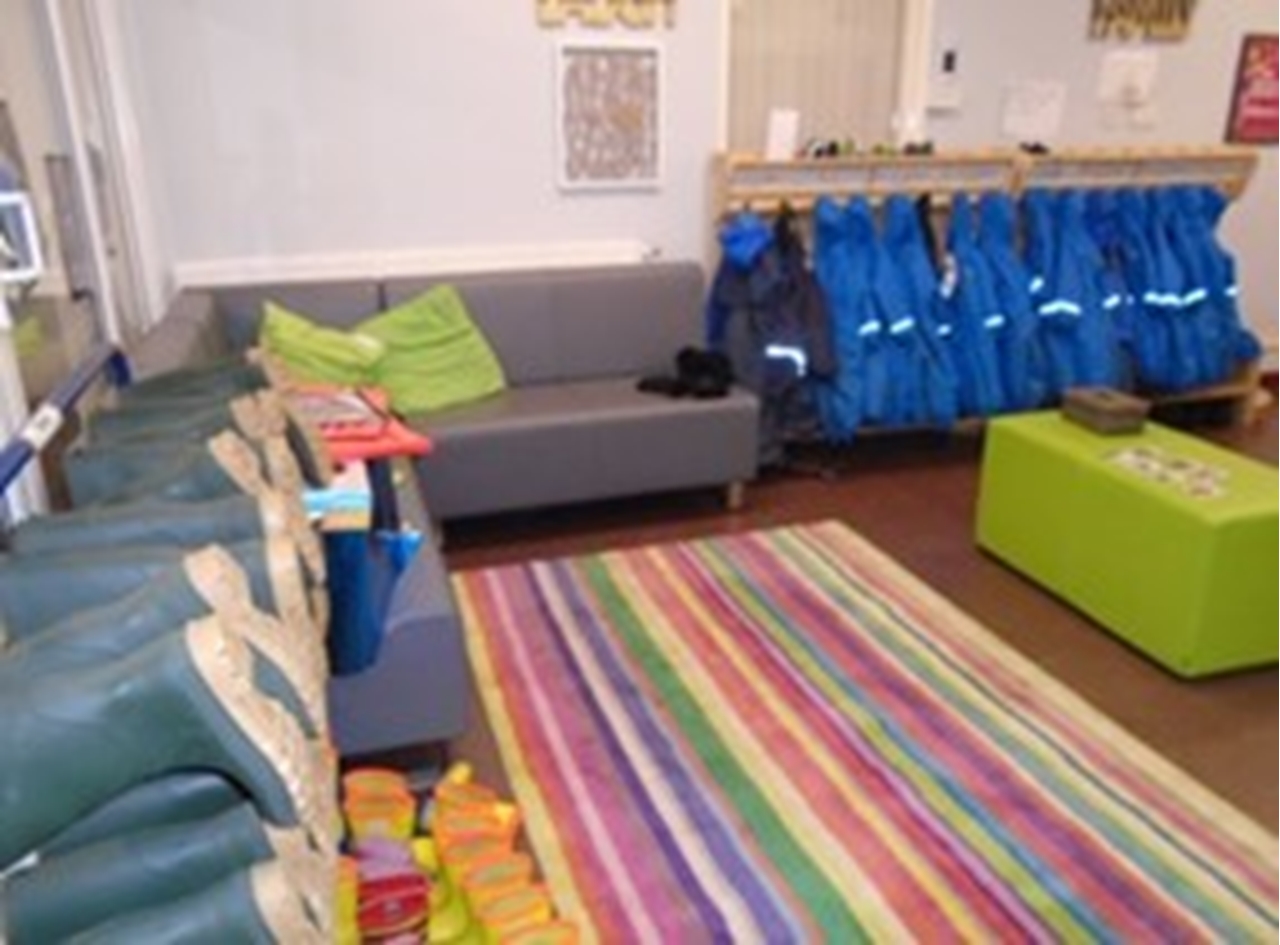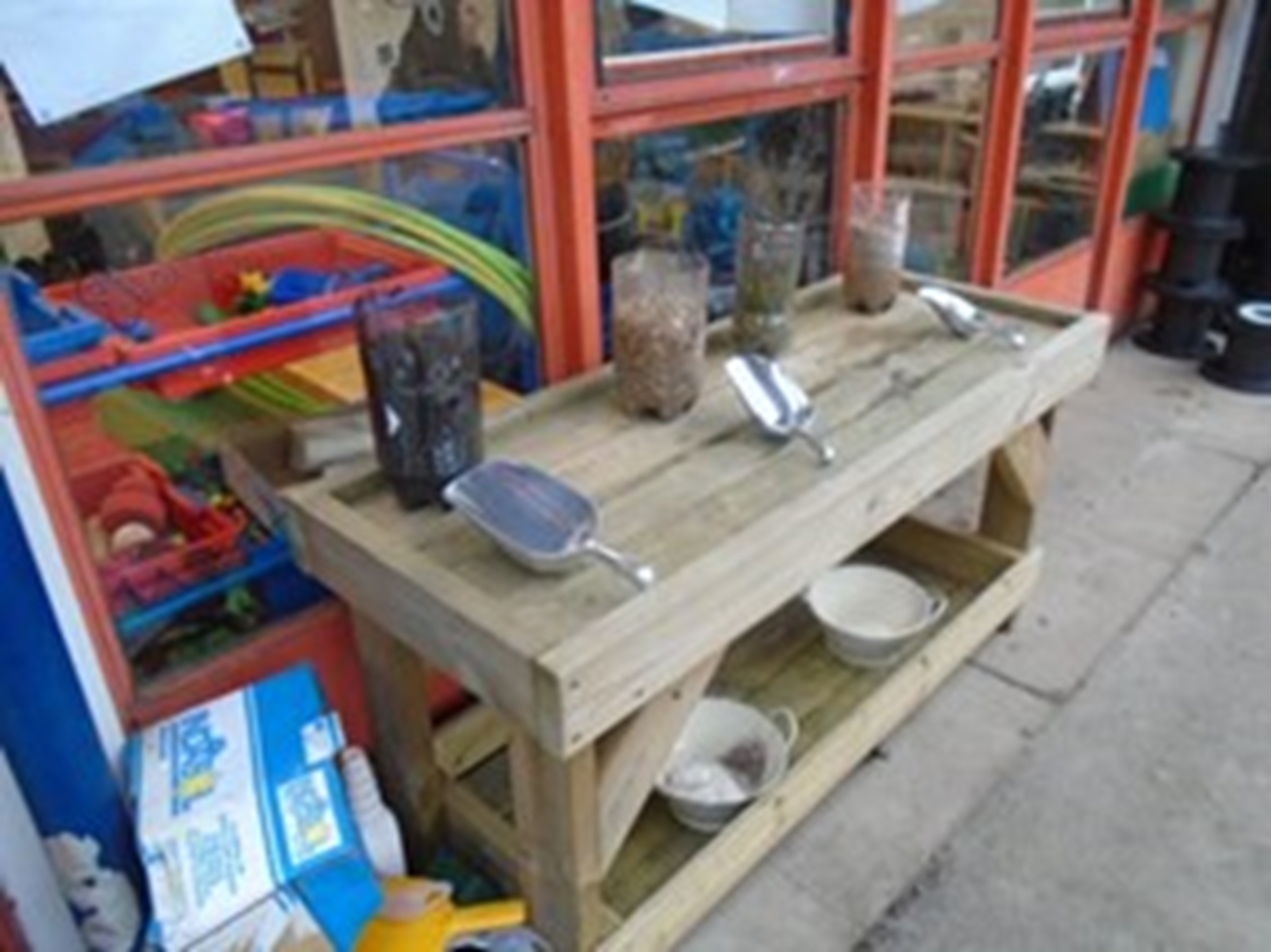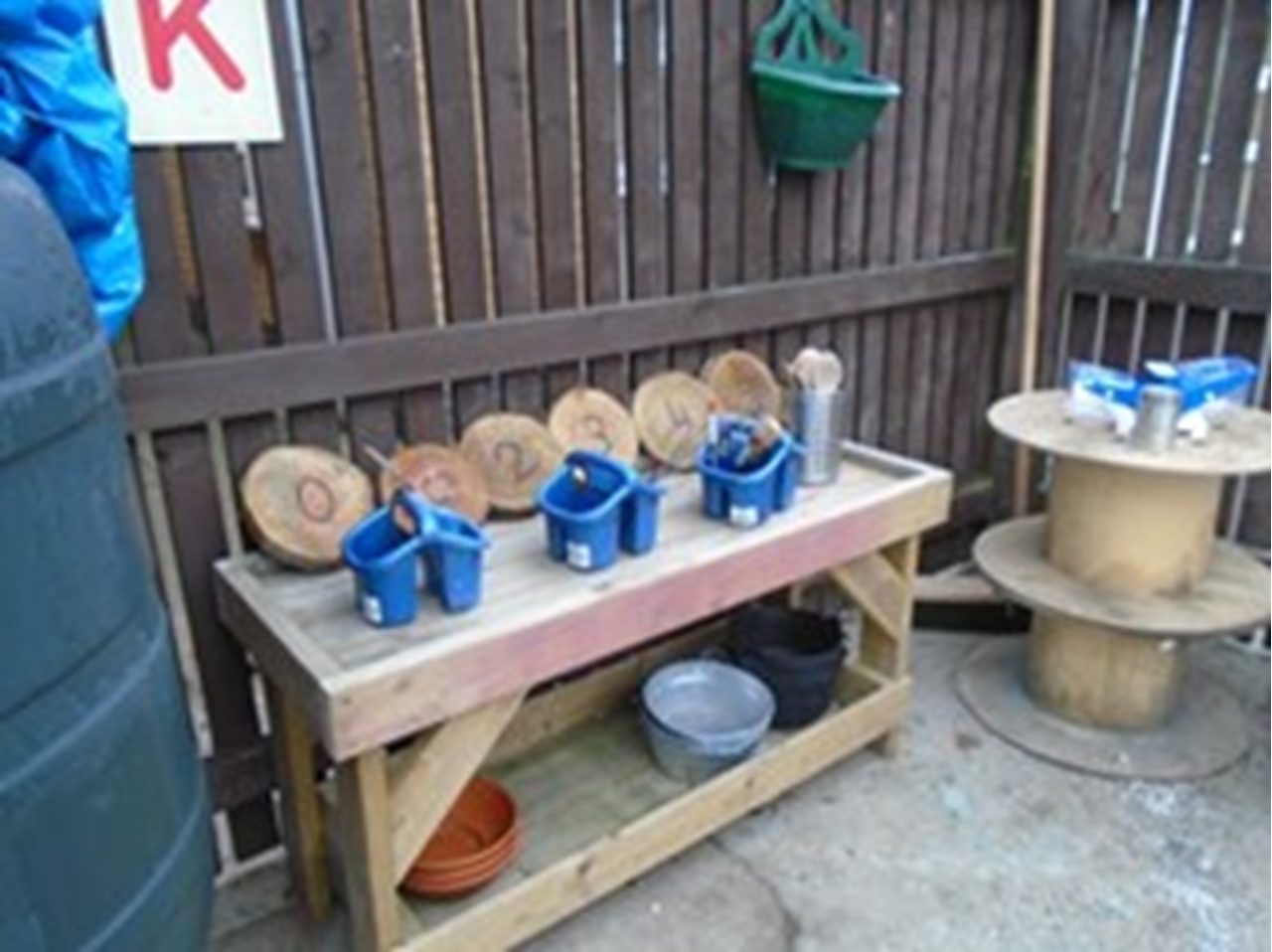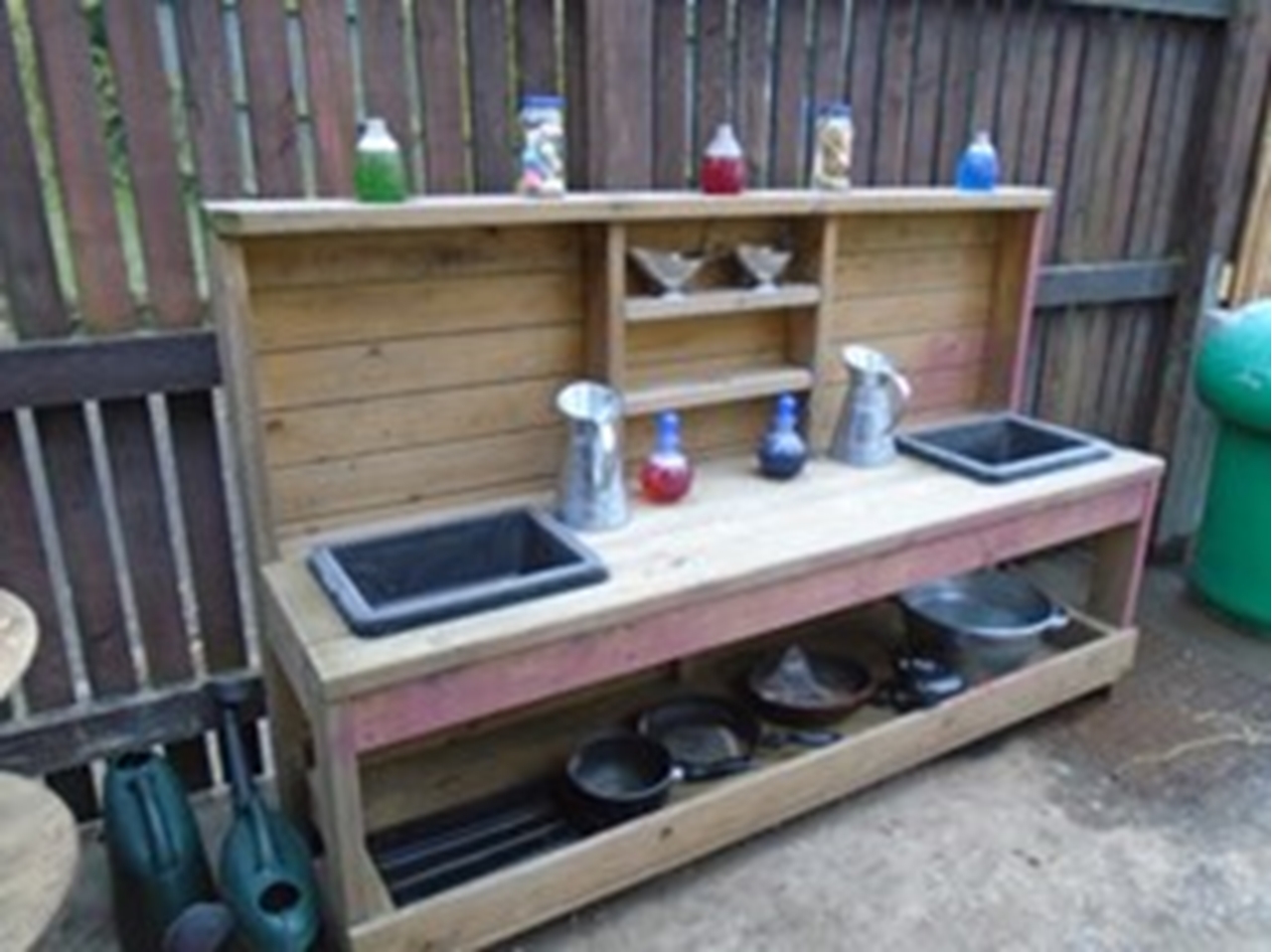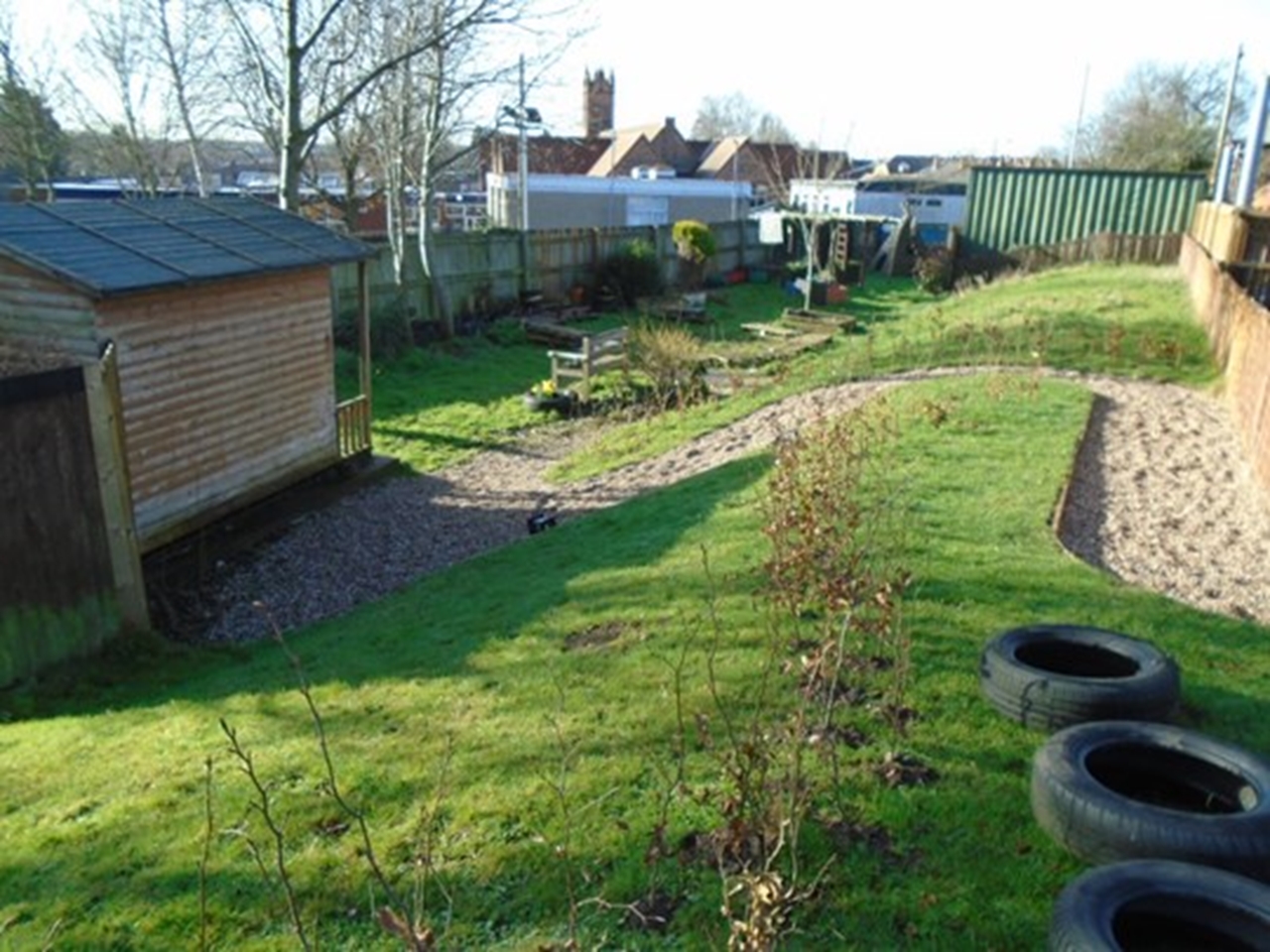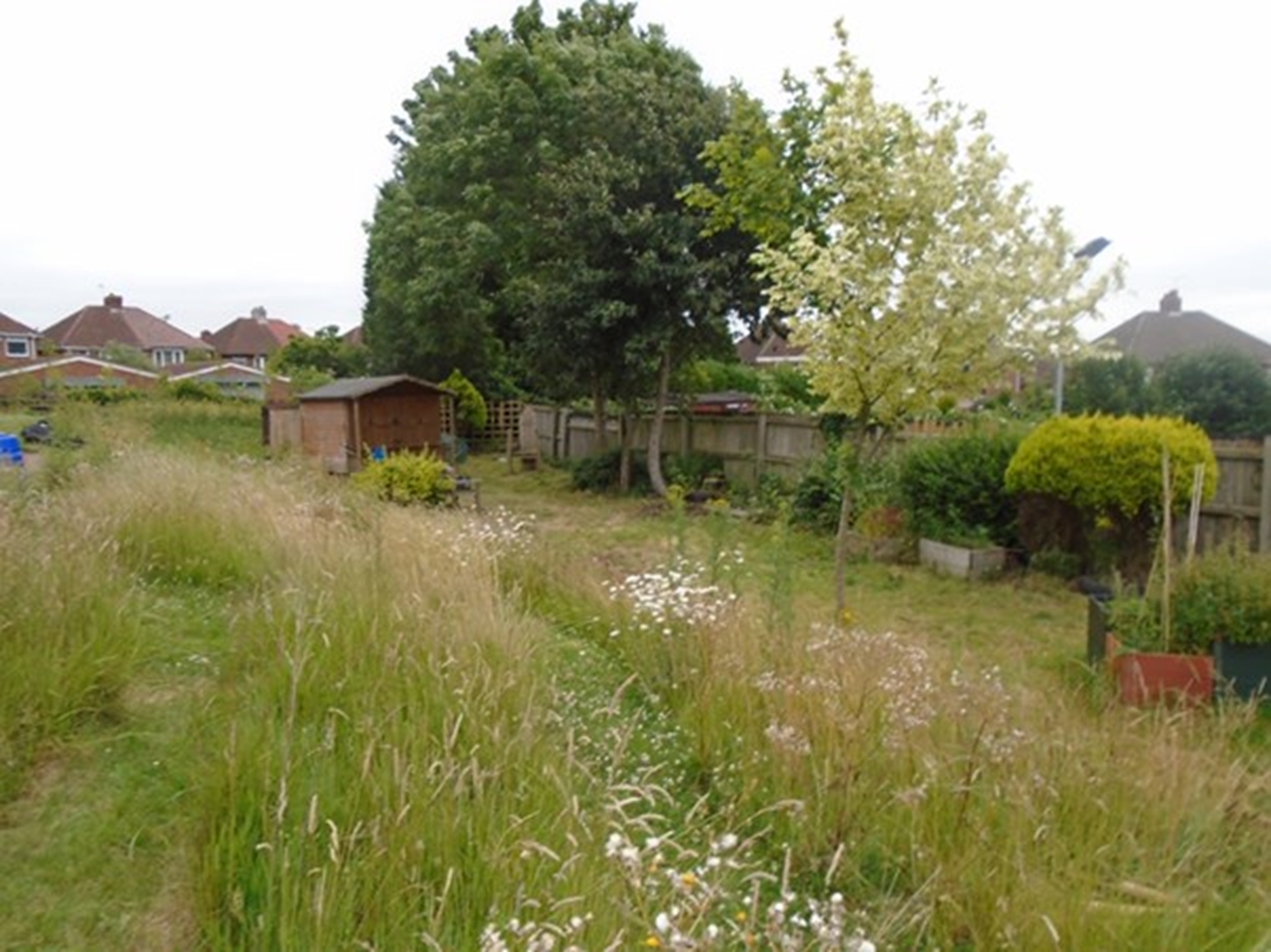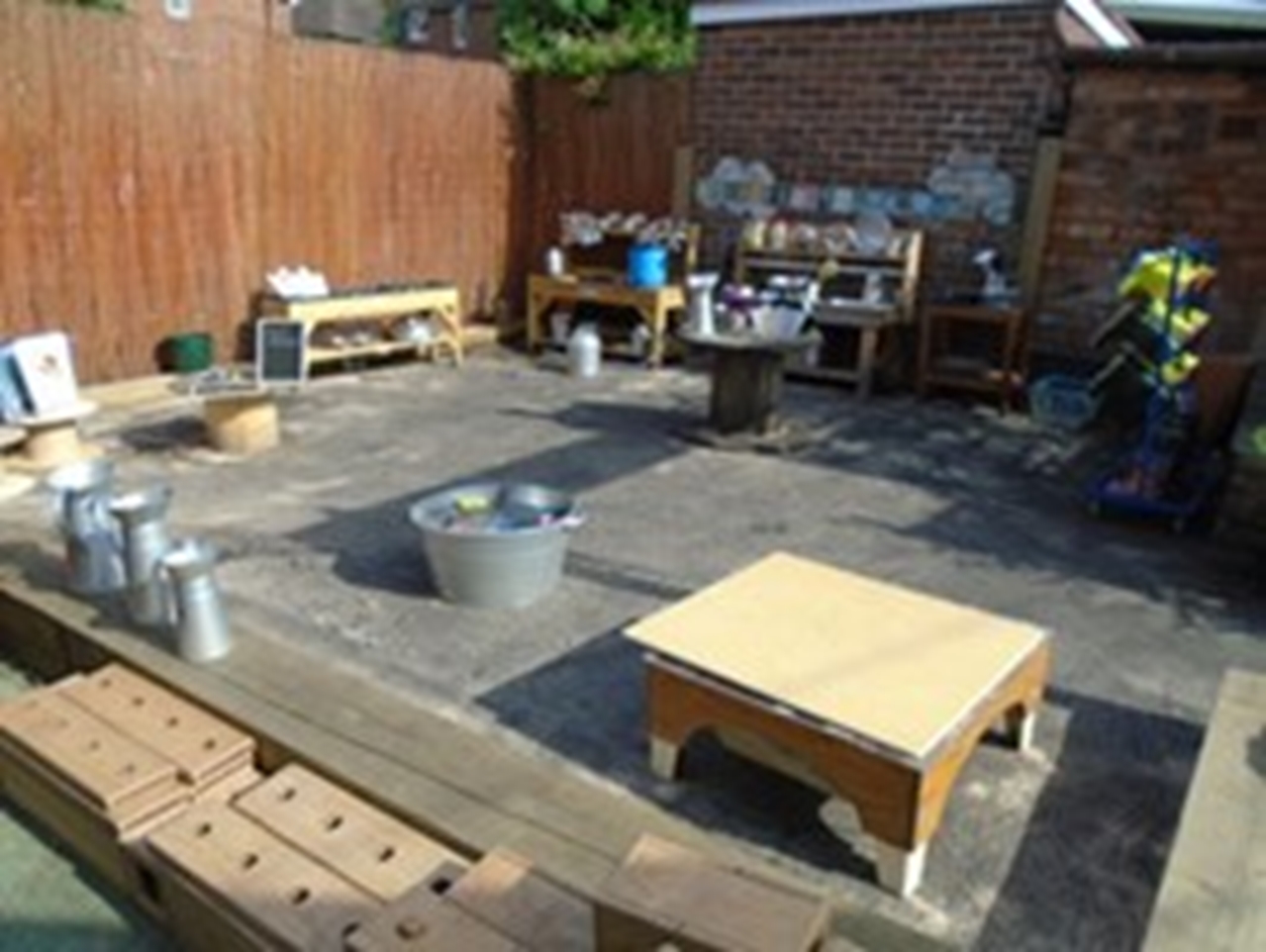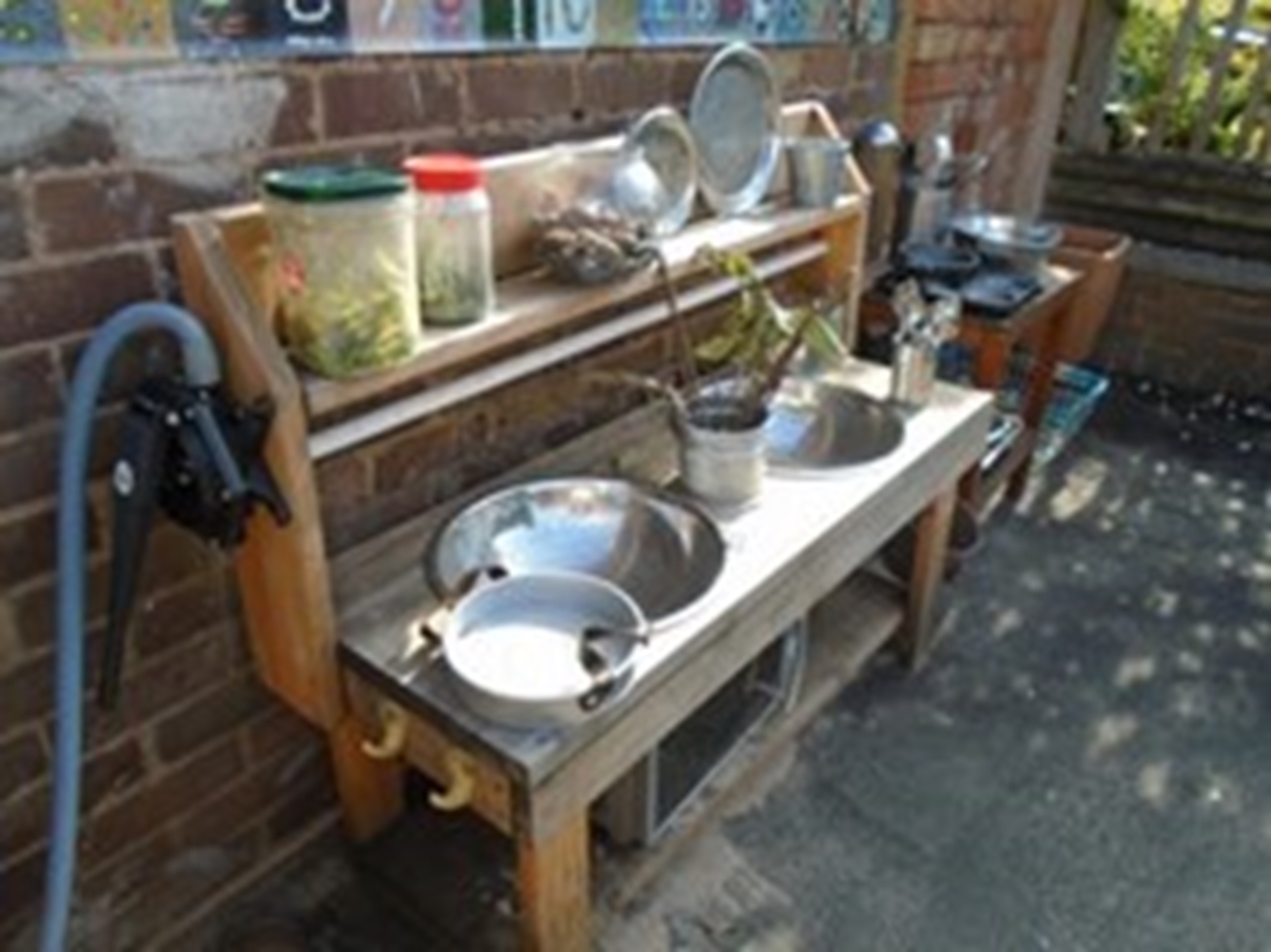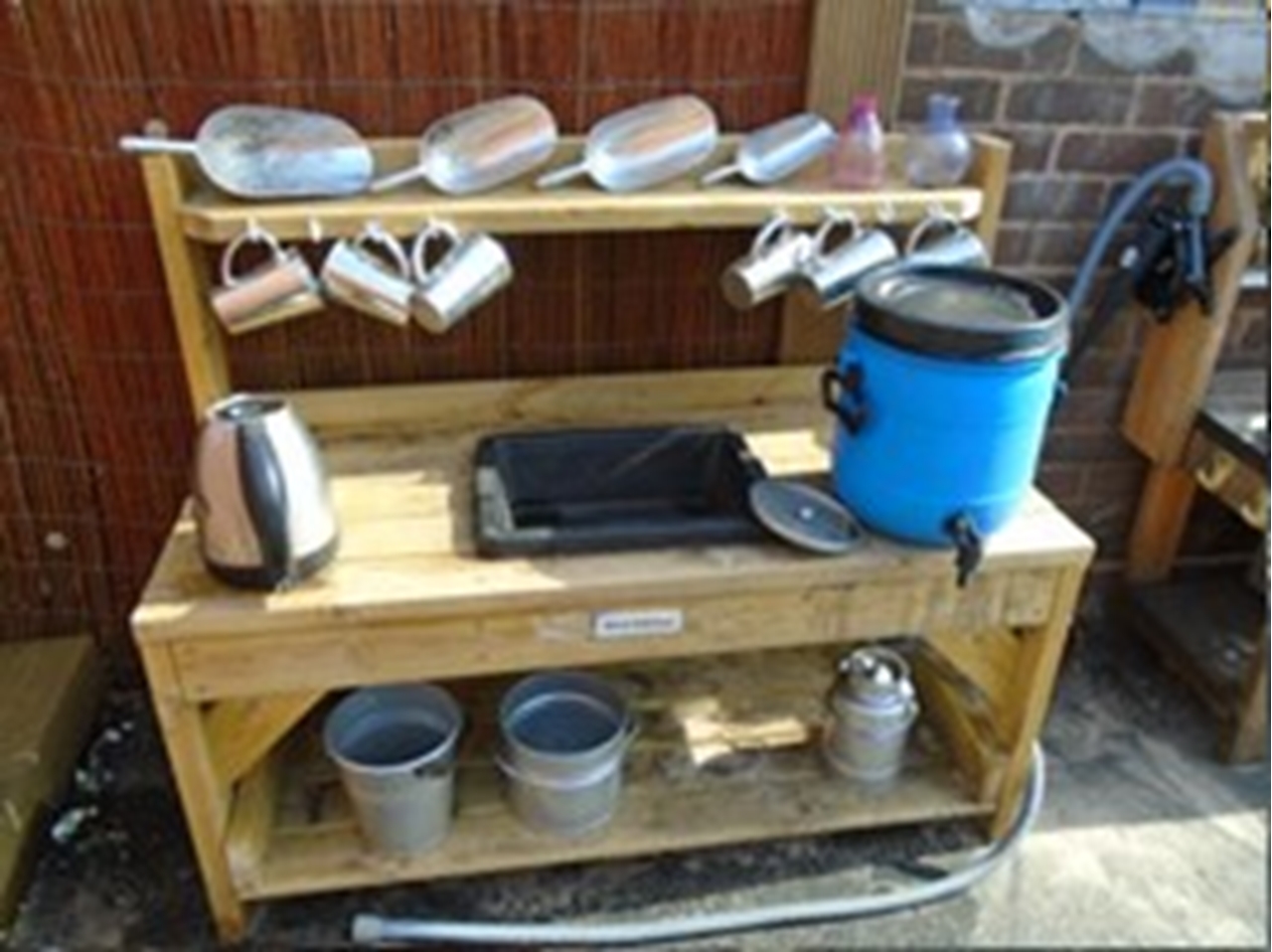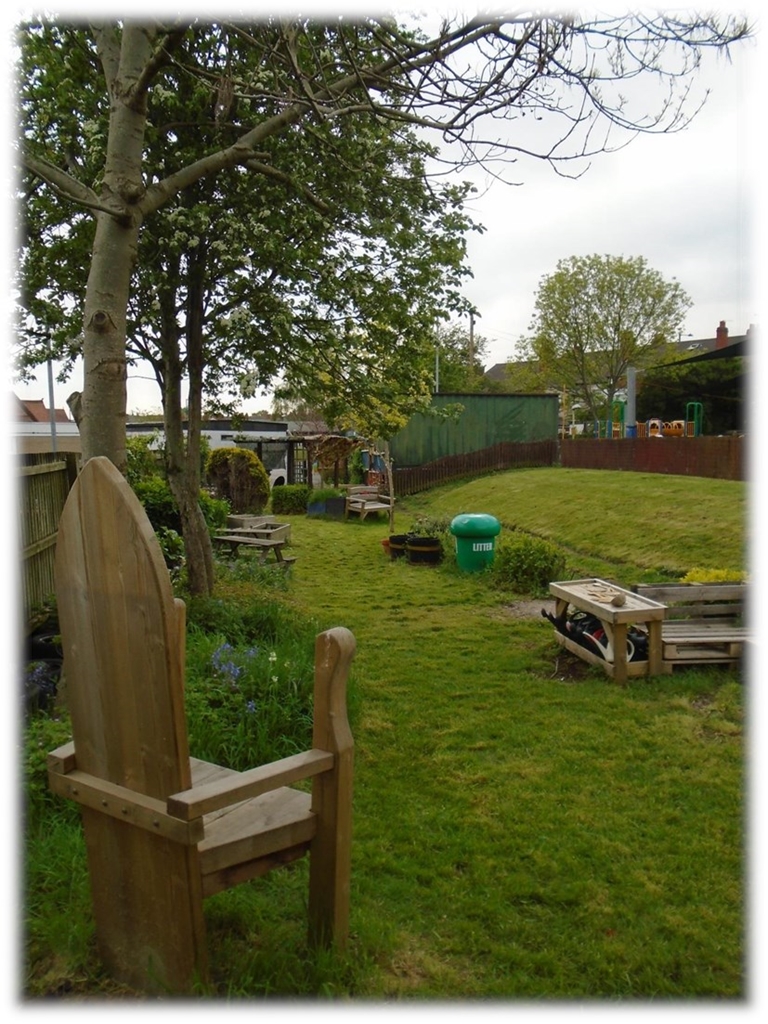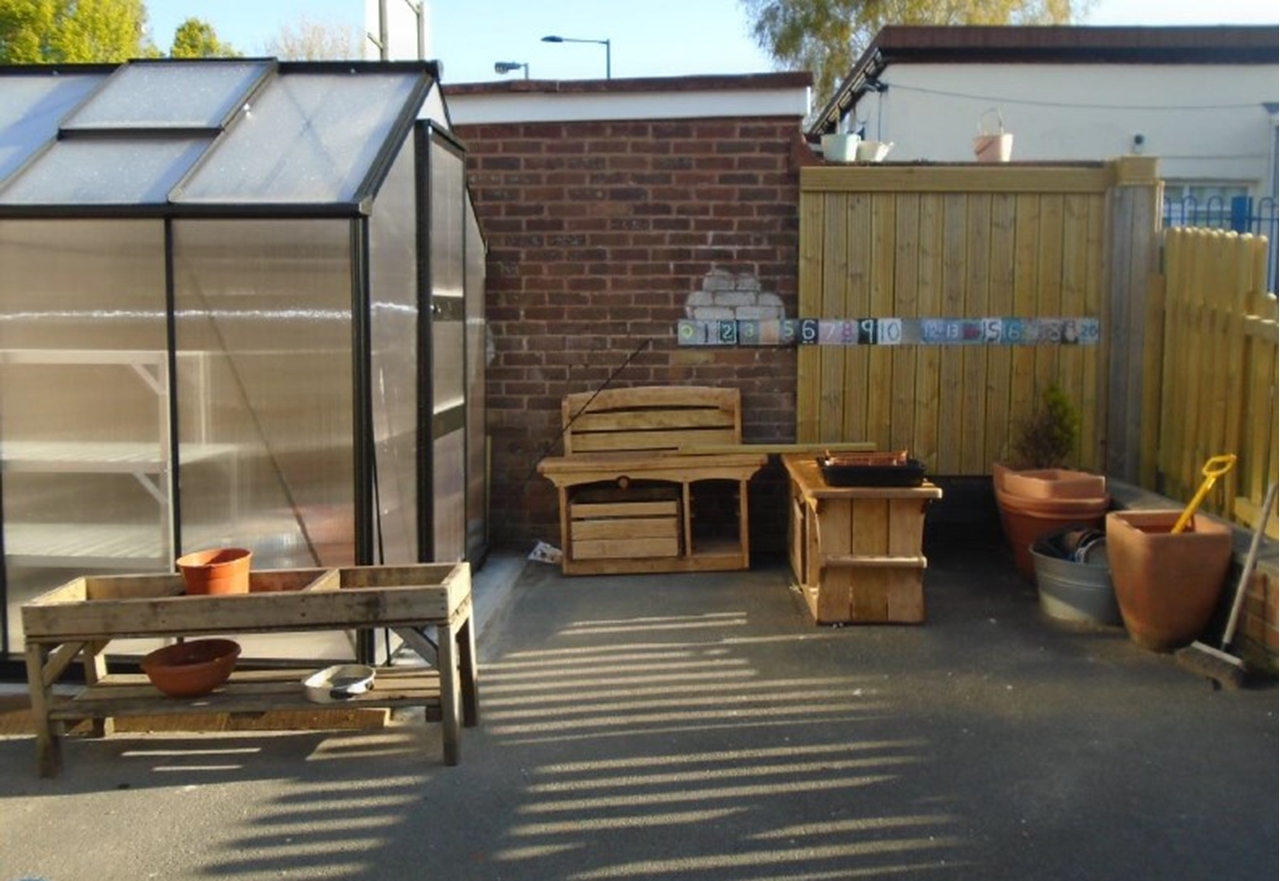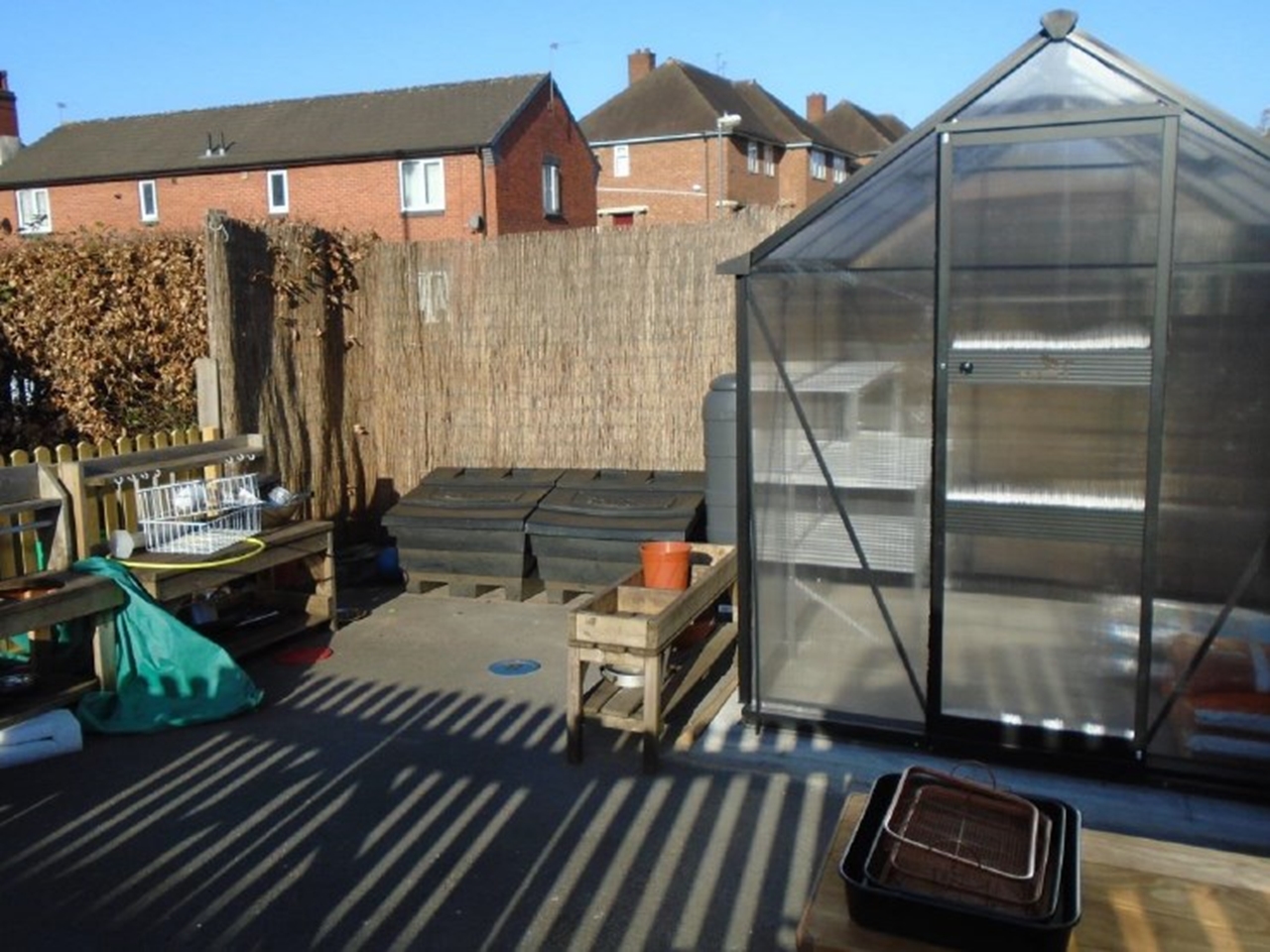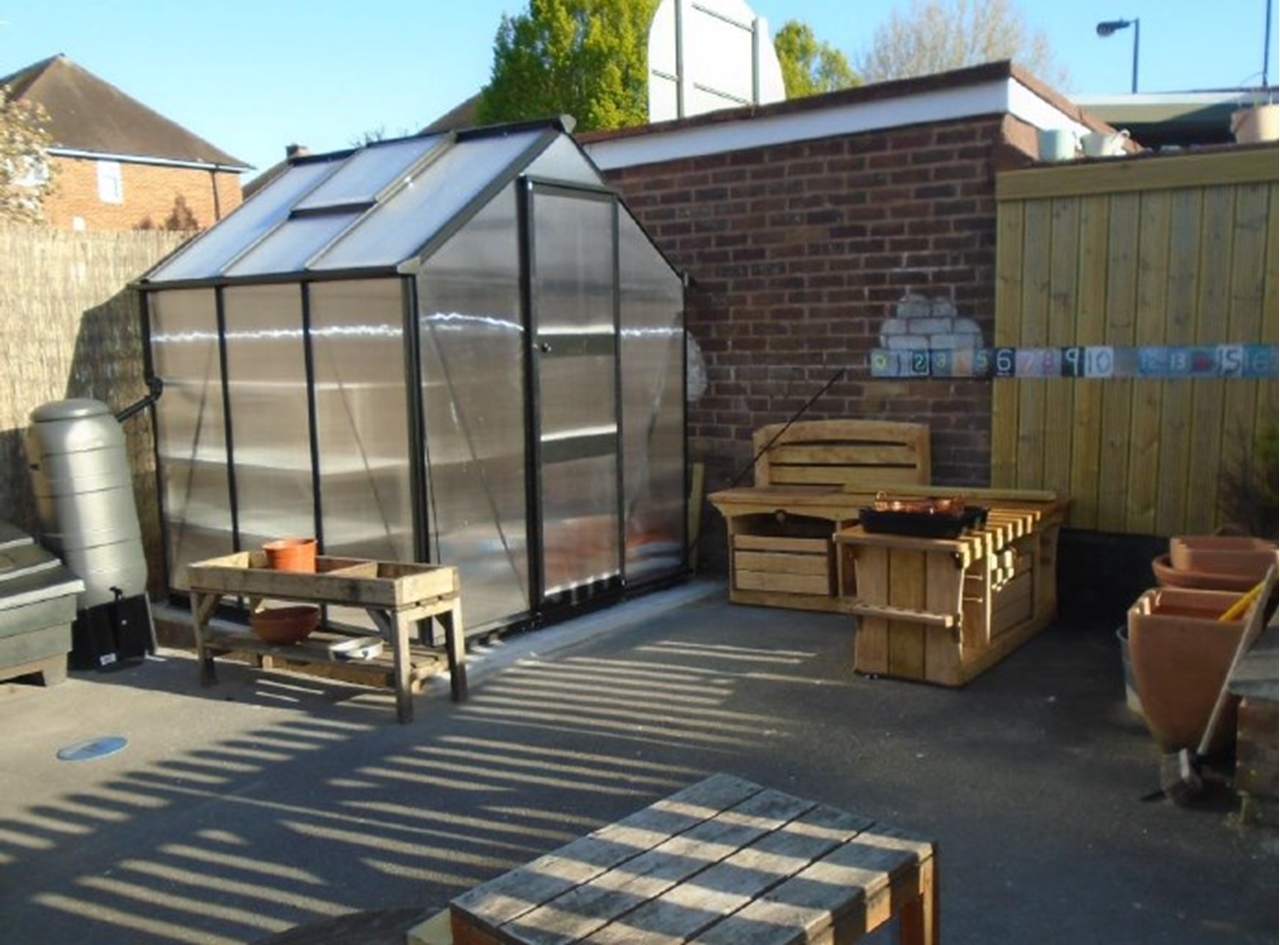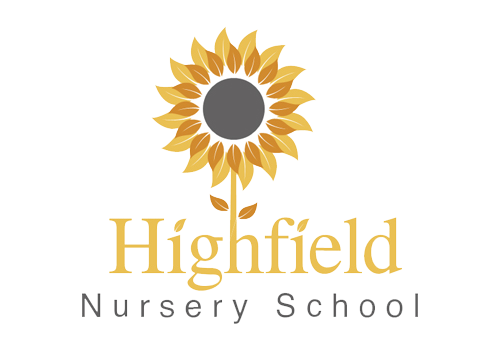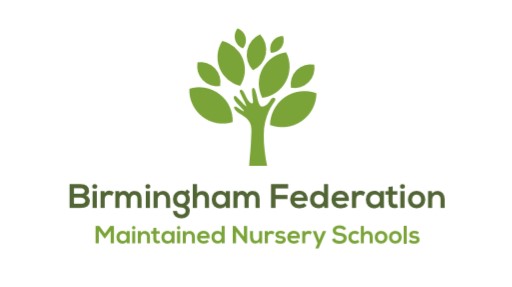Outdoor learning
Learning from pioneers
"Children want space at all ages. Space, that is ample space, is almost as much wanted as food and air. To move, to run, to find things out by new movement, to feel one's life in every limb, that is the life of early childhood." Margaret McMillan (1930)
All seasons
The children experience learning through all the elements
- Water - rain
- Earth - mud kitchens and digging
- Air
- Fire (Use of an outdoor fire pit for cooking is led by forest school leaders and follows a full risk assessment)
We provide the children with a broad and balanced curriculum indoors and out.
We believe that children learn through outdoor play, which complements and enhances their indoor learning.
Outdoor learning is part of the daily routine. We operate a free-flow system which means that children are able to move freely between indoors and outdoors during play every day.
We aim to:
- Promote good quality, challenging, safe and accessible play for all children.
- Provide well-planned engaging activities outside similar but different to indoors.
- Provide an environment to extend and improve children's learning and wellbeing regardless of the weather.
- Expand children's horizons of what learning can be experienced outside.
- Fulfil the requirements of the Early Years Foundation Stage outdoors as well as indoors.
Learning, teaching and caring opportunities
- Be independent.
- Be inventive and creative.
- Children make their own choices and decisions.
- Take risks and solve problems.
- Learn and play in diverse groupings which are not always controlled or supported by an adult.
- Develop individual interests and find own boundaries.
- Communicate, co-operate and negotiate with others.
- Experience a sense of adventure, excitement and fun.
- Develop fine and gross motor skills.
- Develop physical skills for supporting emotional wellbeing.
- Develop an appreciation of things seen, touched, smelt and heard.
- Develop a sense of awe and wonder in the natural world.
- Experience the seasons in all their richness.
- Develop knowledge and understanding of the natural environment for example life cycles.
- Develop and extend cognitive skills (maths, science, geography, language, reasoning, logic) through active experiences, discovery and practice.
- Engage in new experiences.
- Revisit, repeat, re-live, recall, build-on and adapt previous experiences.
- Opportunities to experiment, observe, hypothesize and draw conclusions.
- Experience quiet and secluded areas, for example dens and tents.
- Engage in the world of imagination, fairy-tale, magic, pretend, enchantment, story and fantasy.
What does it look like?
- There are at least two members of staff at all times.
- We teach the children care and respect for each other, plants, animals, wildlife and the environment.
- Children may move large or heavy objects, planks, boxes or ladders when appropriate around the garden to make their own constructions. We show the children the best way to move these objects independently, or with a friend and encourage the children to ask us to help test their constructions for safety.
- Children may use woodwork and gardening tools with adult supervision.
- Children and staff are encouraged to wear wellington boots and waterproof clothing when the garden is wet and muddy.
- The school provides clothing for wet/cold weather (waterproof jackets, trousers, fleeces, wellington boots for children and staff. The school provides sun hats and sun cream in warm/sunny weather and woolly hats in the winter for children.
- We designate areas for specific equipment - eg wheeled toys.
- Small fires are supervised by a staff member constantly and have been properly risk assessed.
- We make full use of prevailing weather conditions after risk assessing the circumstances.
Forest School
- Led by level 3 trained Forest School leaders.
Schemas that flourish outdoors
Transporting
This is when a child is interested in moving around, transporting objects from one place to another. We provide wheeled toys plus equipment such as bags, buckets, blankets and containers to move things from place to place plus other equipment to move through space in different ways plus a variety of containers to transport. These children will enjoy picnics, emptying or filling.
Trajectory
This is when a child is interested in how objects and people move, and how they can affect that movement. We should be prepared for very active and vigorous learning as these children often have very good physical skills via jumping, swinging, sliding, repeated throwing and climbing up and down. A range of different types of blocks, ladders, slides, climbing equipment, balls, hoops, tyres as well as smaller resources to cut, bang, tear, saw, flick etc. via a range of creative activities such as spray and splatter painting and woodwork.
Connecting
This is when a child shows an interest in fastening things together as well as taking them apart. Practitioners need to provide resources such as train tracks, threading, model building and string, tape and rope extensions with lots of wool, ribbon, string and tape plus the resources to connect so these children can explore how different things can be joined together in different ways. Children interested in connecting particularly enjoy the opportunity to deconstruct old machines and technology as well as a collection of zips and fasteners.
Rotation
This is when a child develops an interest in things which turn, such as knobs, keys, taps and wind-up toys. They may also run round in circles often getting dizzy or make circular or spiral type drawings. They need space to play circle games, push wheelbarrows and buggies around, spin umbrellas or the open parachute, unwind and rewind the hose, spin hoops, balls, and wheels both large and small.
Enveloping/enclosures
This is when a child becomes interested in creating and/or occupying enclosed spaces. Some spaces may be full or empty and such children are interested in ownership. We should provide open-ended resources so children can hide away inside cardboard boxes, under fabric pieces as well as small resources such as a selection of bags and boxes for hiding away smaller items. Farm and wild animals with materials to make enclosures are popular, as is hiding under the table.
We believe that 'the best classroom and the richest cupboard is roofed only by the sky.' (Margaret McMillan)
